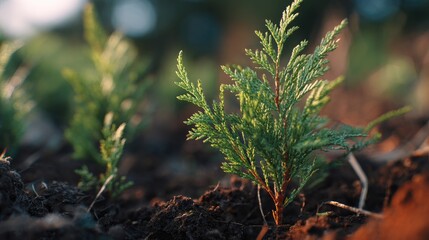When you think of cedar, you probably picture the rich, aromatic wood used in closets, furniture, or log siding — but here’s the twist: Eastern Red Cedar isn’t technically a cedar at all. It’s actually a type of juniper — Juniperus virginiana — one of North America’s most unique and versatile native trees. And depending on where you live, you might know it by a completely different name.
The True Identity: Juniperus virginiana
Scientifically speaking, Eastern Red Cedar belongs to the cypress family (Cupressaceae) — not the cedar family. Here’s how it breaks down:
- Kingdom: Plantae
- Division: Tracheophyta
- Class: Pinopsida
- Order: Pinales
- Family: Cupressaceae
- Genus:Juniperus
- Species:Juniperus virginiana L.
This species, Juniperus virginiana, is found across much of the eastern and central United States. It is commonly referred to as Eastern Red Cedar, even though it’s a juniper by classification.
Often Confused: Juniperus silicicola
Another closely related species, Juniperus silicicola, also known as Southern Red Cedar or Sand Cedar, grows primarily along the Gulf Coast and lower Atlantic states. Although it shares a similar appearance and fragrance, it is its own distinct sub-species.
Because of their similar look and overlapping range, the two are often mistaken for one another. However, J. silicicola tends to thrive in more coastal, salt-tolerant environments, while J. virginiana prefers upland soils further inland.
Where It Grows
Juniperus virginiana has one of the widest native ranges of any North American conifer — stretching from southern Canada all the way to Texas and northern Florida. It grows in rocky soils, along fence lines, in open fields, and on ridges where few other trees can survive.
This adaptability has made it both a blessing and a challenge. In parts of the Midwest and Great Plains, its aggressive spread has earned it the nickname “The Green Glacier,” as it slowly encroaches on grasslands and open habitat. But through responsible harvesting and milling, Eastern Red Cedar can be transformed from a landscape problem into a renewable, valuable resource.
Many Names, One Tree
Depending on the region, Juniperus virginiana goes by a variety of names — some accurate, some not so much. Here are just a few:
| Common Name | Where It’s Used |
|---|---|
| Eastern Red Cedar | Most widely used across the eastern U.S. |
| Pencil Cedar | Historically used for making pencils |
| Red Juniper | Midwest and Great Plains |
| Virginian Juniper | Older botanical references |
| Eastern Juniper | Common in forestry and ecological studies |
Meanwhile, Juniperus silicicola — the similar but separate species — is more often called Southern Red Cedar or Sand Cedar, particularly in coastal areas.
Why It Matters
Understanding the difference between these two species helps ensure that when you’re buying Eastern Red Cedar lumber, you know exactly what you’re getting.
- Authenticity: Real Juniperus virginiana has distinct color, density, and aroma that make it ideal for millwork, siding, and interior applications.
- Geographic Relevance: If you’re inland and east of the Great Plains, the “red cedar” growing in your area is almost certainly J. virginiana.
- Better Communication: Customers, landowners, and woodworkers often use these names interchangeably — but a little knowledge goes a long way in making sure everyone’s on the same page.
Bringing It All Together
At Mountain Milling Co., we specialize exclusively in Eastern Red Cedar (Juniperus virginiana), the richly aromatic, naturally durable species found throughout the heart of the country.
We source and mill this native wood into Tongue & Groove, Siding, Trim, and more — turning an abundant natural resource into timeless materials for homes and projects nationwide.

